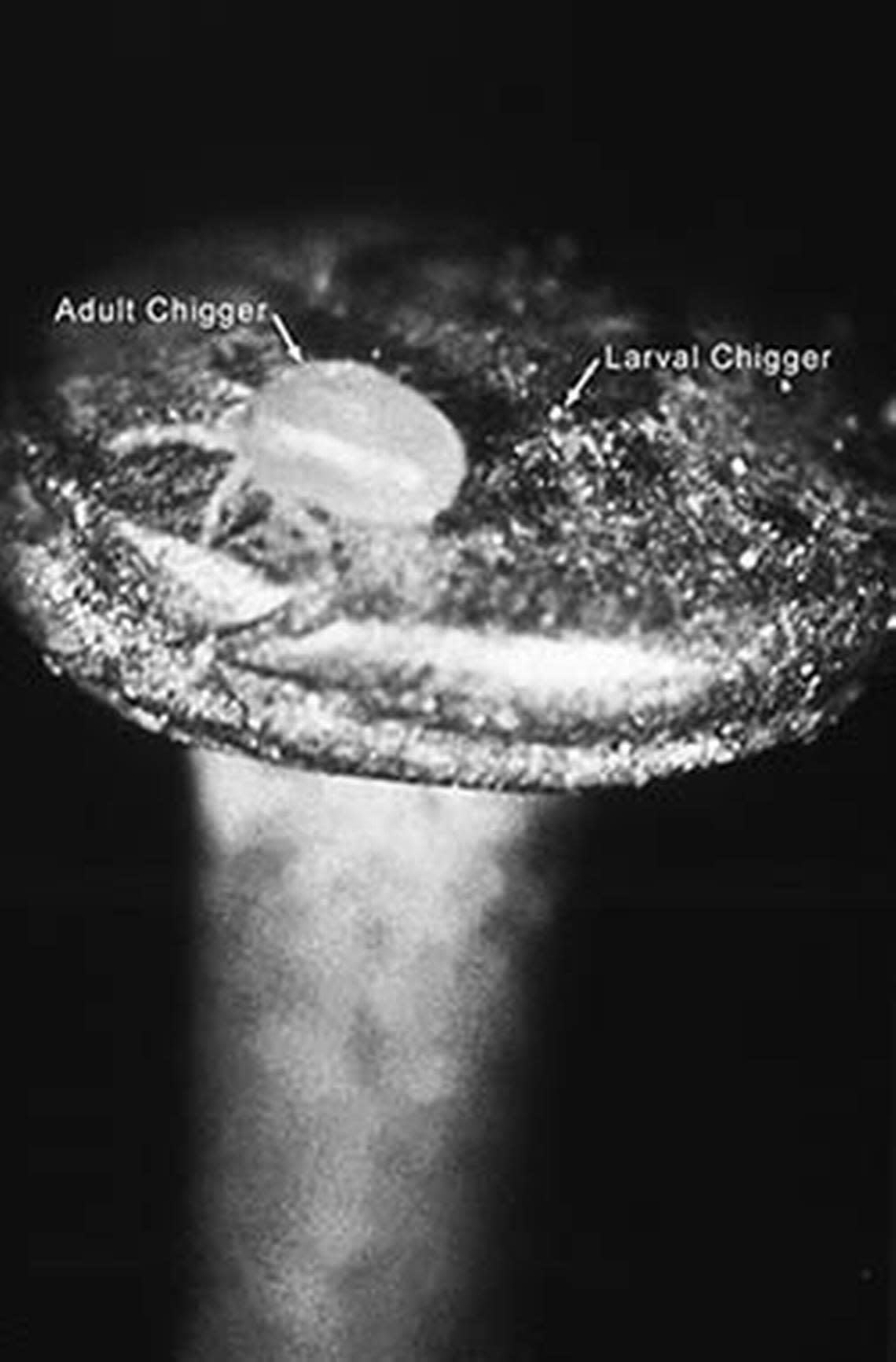Chiggers infected with potentially deadly bacteria found in NC. Here’s what to do.
Chiggers carrying bacteria that can cause a deadly kind of typhus never before found in the U.S. have been located in North Carolina.
Researchers from N.C. State University and UNC-Greensboro published a paper earlier this month in the journal Emerging Infectious Diseases saying they found chiggers carrying a type of Orientia bacterium that can cause scrub typhus through sampling in 2022.
In the paper, the writers say scrub typhus was only thought only to occur within a triangle anchored by Pakistan, Russia and Australia, but recently has been reported in the Middle East, southern Chile and Africa.
The illness has not been reported in the U.S.
What is scrub typhus? What are the symptoms?
Scrub typhus often is compared to the tick-borne Rocky Mountain Spotted Fever and other illnesses.
The Centers for Disease Control says symptoms of scrub typhus generally appear within 10 day of being bitten by an infected chigger, which is the larval stage of a mite.
The illness most often includes:
fever
headache
body aches
sometimes a rash
People with severe illness can develop organ failure and bleeding that can be fatal if not treated, according to the CDC.
How is scrub typhus treated?
Doctors can effectively treat the illness with the antibiotic doxycycline, the CDC says.

How (and where) was scrub typhus found in North Carolina?
In their paper, the research team said scrub typhus causes more than a million cases of illness each year, but that its presence in the U.S. had never been investigated.
In 2022, the team went into several North Carolina state parks, a national wildlife refuge and a national forest to look for chiggers and see if they were carrying the bacteria. They put tiles on the ground at 10 sites in eight counties and checked the tiles after about a minute for the presence of chiggers. They collected the chiggers they found and tested them.
Researchers found chiggers carrying the bacteria in Morrow Mountain State Park, Lumber River State Park, Merchant Millpond State Park, Kerr Lake State Recreation Area and Falls Lake State Recreation Area.
The team said the findings were significant because they show the spread of the bacteria to the continental United States and suggest that the bacteria are passed from mother mites to their offspring. The team said more study is needed to determine how widely distributed infected chiggers are across the country and whether wild animals that serve as hosts for the chiggers become infected with scrub typhus and whether they can transmit it.
The team, which included Loganathan Ponnusamy, Michael Roe, Kaiying Chen and Mick Kulikowski of NCSU, also said clinicians here should be alert for possible cases of the illness.
There is no vaccine to prevent scrub typhus, and the CDC says the best way to avoid is to not come in contact with chiggers, which live in brush and vegetation.
Here is the CDC’s advice for avoiding chiggers
If you’ll be outdoors in places where chiggers live:
▪ Use insect repellent containing DEET or other active ingredients registered for use against chiggers on exposed skin and clothing. Follow label instructions.
▪ Reapply insect repellent as directed.
▪ Don’t spray repellent on the skin under your clothes.
▪ If you’re also using sunscreen, apply that first, then the repellent.
▪ To protect infants and children, dress them in clothes that cover the arms and legs. If they’ll be in a stroller or baby carrier, cover with mosquito netting.
▪ Don’t apply insect repellent onto a child’s hands, eyes, mouth or on cuts or irritated skins. Spray the repellent onto your hands and then apply to the child’s face.
▪ Clothes and gear should be treated with 0.5% permethrin repellent. Permethrin kills chiggers, the CDC says, and can be used to treat boots, clothes and camping gear.
